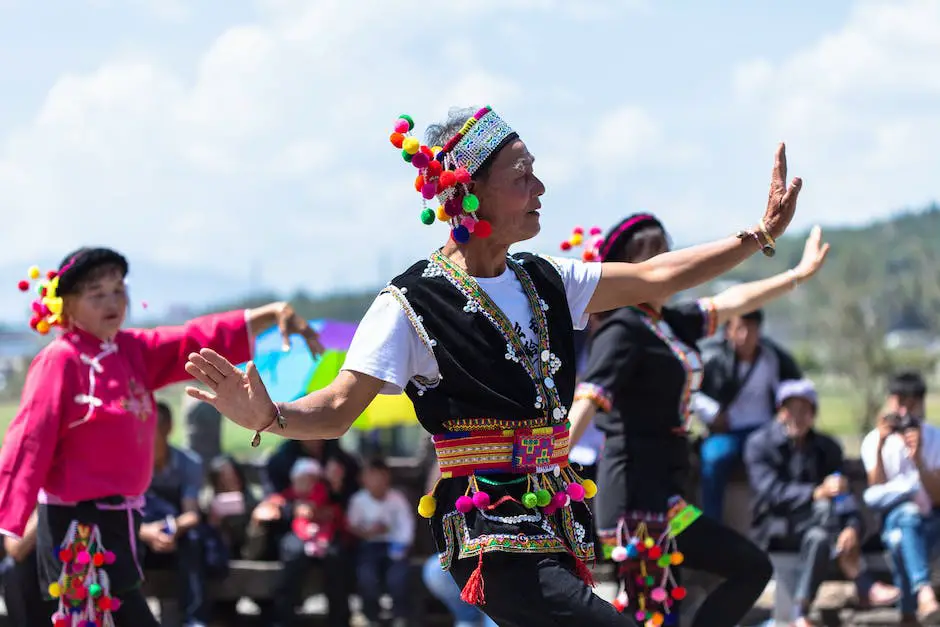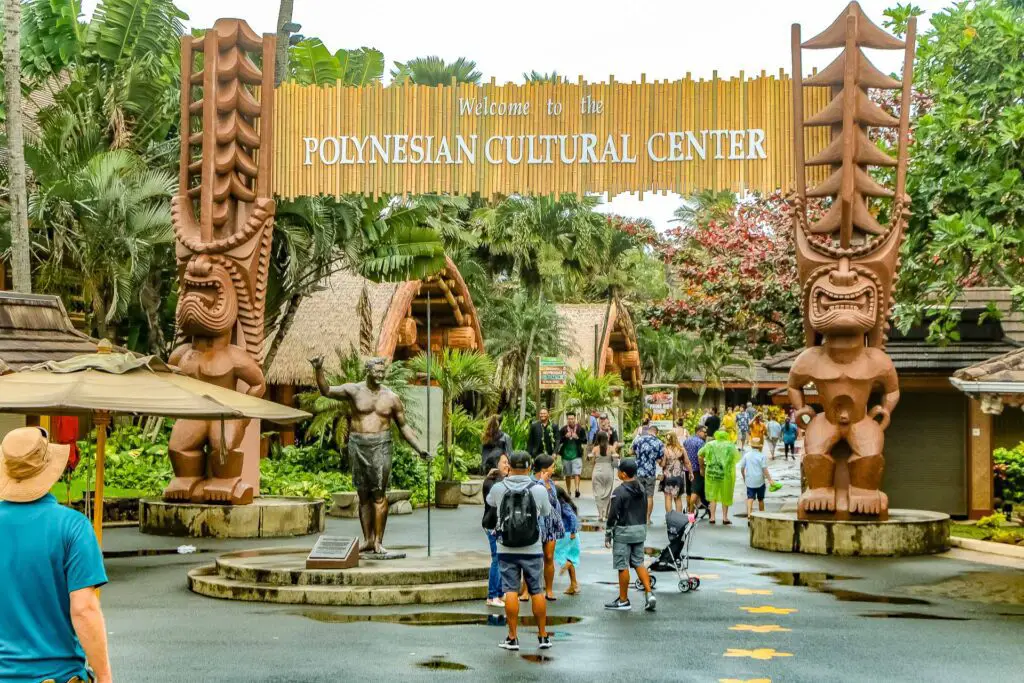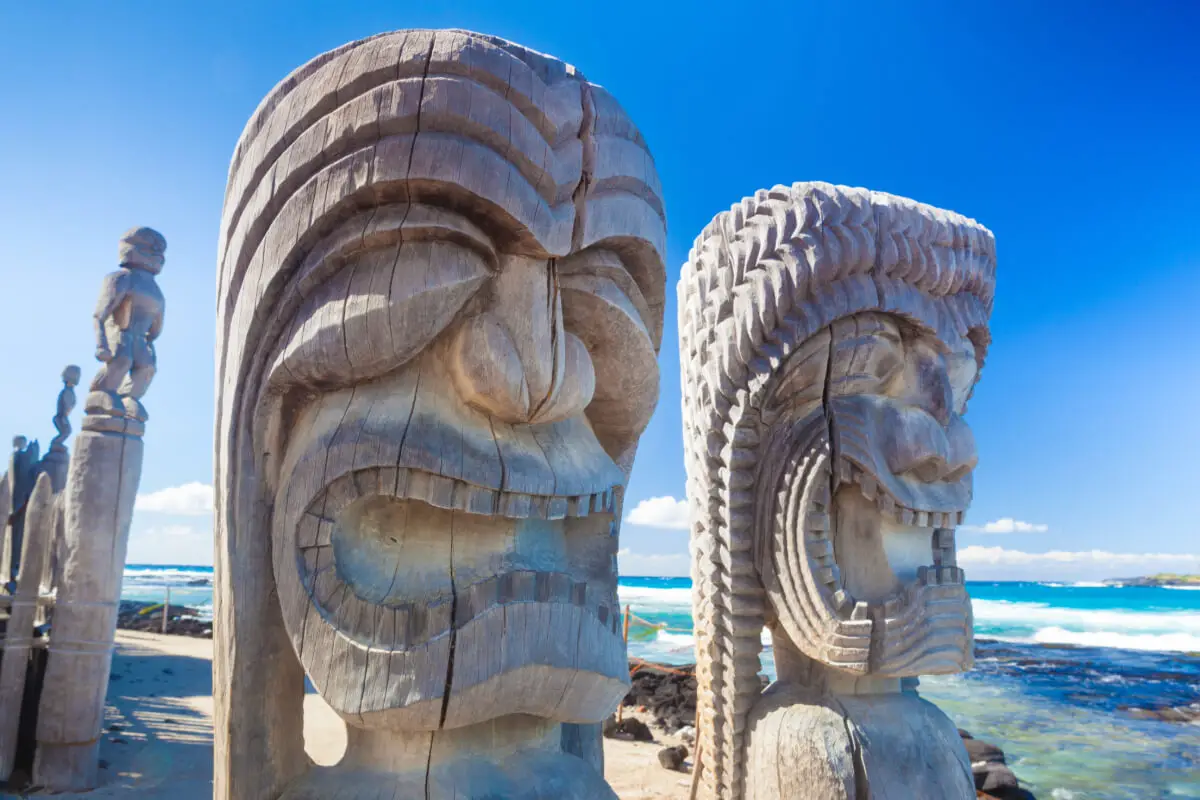Polynesia, a collection of over a thousand islands scattered across the central and southern Pacific Ocean, offers an extraordinary exploration of nature’s majesty meshed with human history. A simple glance at the map reveals many unusual and intriguing names, from Bora Bora to Rarotonga, which hint at ancient narratives waiting to be untold.
These island names, richly embedded in Polynesian culture, are alive with insights into the ancient ways, natural phenomena, celebrated situations, and memorable individuals of the Polynesian society.
Table of Contents
- Understanding Polynesian Islands Names & Origin
- Historical Significance of Polynesian Islands
- Cultural Influence on Polynesian Islands Names
- Modern Usage and Perception of Polynesian Islands Names
- Diving into Specific Islands’ Names and Stories
- Related Questions
Understanding Polynesian Islands Names & Origin
Unlocking the Mystery: Unique Names of Polynesian Islands and Their Origins
Imagine grains of sand sprinkled across an enchanting blue canvas of ocean waters, each with its own tale. Pirates and warriors, volcanoes and coconuts, every day is an adventure. Today’s voyage takes us to the Polynesian islands, a true gem tucked away in the depths of the Pacific Ocean.
These islands don’t just appeal to the senses with their charming landscapes and exotic fruits, but they equally fascinate with their rich history and the origins of their unique names. Bustling with indigenous cultures and traditions, these islands whisper tales of their past and beckon to be unraveled. We’re peeling back the palm leaves of mystery to discover the origins behind some unforgettable names.
Hawaii, the Aloha State, is a slice of paradise, but have you ever wondered where this name originated? Derived from the Proto-Polynesian word “Hawaiki,” it’s considered a place of assembly or homeland, perfect for this gathering spot of island beauty.
Then there’s Tahiti, the most prominent island in French Polynesia. The name ‘Tahiti’ originates from ‘Tafiti,’ meaning ‘it is far,’ as many seafaring explorers describe. Savvy, right?
Next stop: Fiji. Beyond the postcard-perfect beaches and coral reefs, ‘Fiji’ isn’t an original native term but a misinterpretation in action! British explorer Captain James Cook misheard the Tongan word ‘Viti’ (referring to the islands) and hence dubbed it ‘Fiji.’ What a delightfully unplanned twist!
Samoa, a country featuring ten enchanting islands, follows suit with an interesting story. ‘Samoa’ translates as ‘sacred center,’ fitting for a place deeply rooted in communal culture and societal harmony.
And, for a dazzling finish, who could forget Bora Bora? This tiny South Pacific island, surrounded by turquoise lagoons and coral reefs, is a romantics’ haven. The word ‘Bora’ means ‘created by the gods’ in the local Tahitian language, entirely befitting the celestial beauty of this place.
So, there you have it. Remember the hidden history in their names the next time you’re enjoying a sunset on these golden shores. Each island, a treasure trove of stories waiting to be shared, helps create a deeper connection to the land beneath your feet.
We’ll continue to journey, explore, and unmask new mysteries on every sandy shore. Until then, keep the spirit of adventure alive, my fellow wanderers… the world is a whole of unexpected stories worth finding.

Historical Significance of Polynesian Islands
Venture Further: Pacific Island Namesakes Part Two
Offering warm waters, lush landscapes, and enchanting cultures, the Pacific Ocean hosts an array of islands that continue to enchant travelers from all corners of the globe. A deeper appreciation for these vibrant regions can be found in the origins and meanings behind their place names. So, let’s set sail into the mystical realms of Polynesia as we decipher more beautiful island names and their stories!
Introducing Palau: An Island Archipelago Radiating the Aura of the “Rainbow”
Exotic Palau rests on the western edge of the Pacific, with its name believed to derive from the Palauan phrase ‘Beluu er a Belau,’ meaning “village of the Palauans.” This coral archipelago has mesmerizing reefs that reflect a kaleidoscope of colors, recalling the rainbow image. So, next time you marvel at a marine mural at Palau, remember that you’re witnessing the living manifestation of a vibrant rainbow beneath the sea!
New Caledonia: From Scotland to the South Pacific
You will stumble upon New Caledonia in Melanesia, a name that sparks curiosity. This French territory owes its name to British navigator James Cook, who was reminded of Scotland’s landscape – AKA “Caledonia” in Latin – during his exploration of the South Pacific in 1774. It’s pretty funny to imagine Cook squinting, trying to picture the misty Scottish Highlands while encountering the tropical beauty of New Caledonia.
Delving into Guam: What does Yigo mean?
Guam is the biggest and arguably most popular among the Mariana Islands. The village name Yigo, pronounced ‘Jeego,’ in Guam, is derived from the Chamorro word “Gigi,” meaning ‘to have rice.’ The early settlers were farming folks, and now Yigo is Guam’s bread, well, ‘rice bowl’! So, study your rice thrashers for your trip to Charming Yigo.
Unraveling Papua New Guinea – The Land of the “Bird of Paradise”
Papua New Guinea is coined out of two closely connected yet distinct regions: Papua and New Guinea. While the former derives from the Malay word “papuwah,” meaning “frizzy-haired,” the latter was named by Spanish explorer Luis Váez de Torres, who noticed the similarities between the locals and folks from Guinea in Africa. The country is renowned for its diverse flora and fauna, including the bird of paradise. This vibrant creature’s local name, “Raggiana,” means ‘God’s gift.’ Fitting for the place that cradles such magnificent biodiversity!
Not every day do you get to explore places and their names in such detail. These insights reveal the fascinating depths of local cultures, making each trip more meaningful. Now that you’re equipped with these kernels of knowledge, your interaction with these majestic Pacific Islands will never be the same. So, why not flip open that calendar, pack up that bag, and start plotting your next grand escapade? Safe and informed travels!

Cultural Influence on Polynesian Islands Names
Polynesia beckons the adventurous with whispers seemingly sprung from ancient legends, each island laden with a cultural richness that only deepens the allure. Deep within that richness, we find the names that designate these fascinating places, each a testimony of a specific facet of the Polynesian culture.
Embark with us on an exciting journey, extending beyond the familiar territories of Hawaii, Tahiti, Fiji, Samoa, and Bora Bora, and dive deeper into the fantastic range of destinations presented by the captivating islands of Palau, New Caledonia, Guam, and Papua New Guinea.
Let’s start our journey with Palau, a gem shimmering in the western part of the Pacific Ocean. The name “Palau” is believed to originate from the Palauan language. Various interpretations have surfaced, but the most widely acknowledged is “Island of the Palauan people.” By proudly stating the ownership and belonging of its inhabitants, the name of this island reveals a deeply embedded sense of kinship present in the Polynesian culture.
Next, allow me to transport you to New Caledonia, where Scotland walks hand in hand with Polynesia. The passing traveler might wonder, “Why does this Polynesian island share a name with a place from the cold northern reaches of Europe?” The answer rests within the 18th century when British explorer James Cook first laid eyes on the island’s rugged landscapes that reminded him of Scotland, known in Latin as Caledonia. This island, “New Caledonia,” was Cook’s tribute to Scotland, a bow to the beauty these two completely different places share.
Let’s turn our compass towards Guam, where Yigo, the largest village, sits, showcasing its importance. “Yigo” is believed to mean “muddy water” in the Chamorro language, drawing back the curtain on the island’s picturesque surroundings and displaying the importance of nature in Polynesian identity.
Finally, let’s touch down on the enigmatic island country of Papua New Guinea. The name “Papua” might strike a chord with those familiar with Malayan languages, where “papuwah” means “not united.”
The latter part of its name, “New Guinea,” is a tribute given by Spanish explorer Ynigo Ortiz de Retez, who noted the locals’ resemblance to the Guinea coast inhabitants in Africa. Thus, the country’s name underlines a complex Polynesian history and web of interactions with different cultures.
All in all, these islands’ names offer a plethora of information, each as an open book that chronicles the Polynesian people’s culture, history, and identity. Just as the Pacific Ocean holds numerous gems for those willing to venture beyond the horizon, the island names serve as exciting riddles, inviting every travel-loving soul to uncover and appreciate the true spirit of Polynesia.
Just remember, in traveling and learning, the journey matters, not just the destination. Happy exploring!

Modern Usage and Perception of Polynesian Islands Names
Magnificent Moku: The Evolution of Polynesian Island Names
When you browse a map of the Pacific Ocean, your eyes sweep over names like Palau and Papua New Guinea, perhaps giving little thought to the story behind them. But every name on that map tells a tale – some of the ancient cultures, others of geographical features, and some of the foreign influences and misunderstood dialects.
Hopefully, your passport is ready! We will make a whirlwind tour of some lesser-known Pacific islands, exploring the backstories of their names and their modern usage.
First on our journey is Palau, an archipelago known for its sparkling emerald-green waters. But do you know the name Palau pays homage to their ancient culture? Historically, residents used the term “Beluu,” translating to “village,” to describe the cluster of islands. Over time, western influences morphed “Beluu” into “Palau.” The humble origins of the name reflect the islanders’ profoundly rooted sense of community and kinship.
Next, we venture to the sun-dappled shores of New Caledonia. Interesting. A tropical paradise with a name that points to the chilly Scottish Highlands! This French territory was named by a homesick British Captain, James Cook, reminiscent of a Latin term for Scotland – Caledonia. Despite its distant geographical and cultural connection, the islanders’ love for their home remains unaffected by its Scottish namesake.
The third stop is Guam, a bustling nexus of cultures in Micronesia. It is home to Yigo, a scenic village. The name Yigo is believed to be derived from “Yugu,” meaning “place of clifftop roses.” This name attentively underlines the importance of natural elements in shaping the identity of everything Polynesian.
Zooming further west, we reach Papua New Guinea, the second largest island globally, packed with culture, languages, and tribes. The island’s name reflects its remarkable history and the continuous cultural exchange it has experienced. “Papua” is derived from a Malay word meaning “frizzy-haired.” At the same time, “New Guinea” was assigned by Spanish explorers who noticed similarities between the indigenous people and the population of the Guinea region in Africa.
Each island, with the power of its name, harbors unique elements of the Polynesian identity while signifying the influences of world cultures. There’s an almost poetic beauty in this, isn’t there? As names evolve, the essence remains, reflecting these islands’ resilient spirit and rich, enigmatic cultures.
The stories behind these names invite us to dig deeper, explore, and, most importantly, appreciate Polynesia’s natural essence. Happy travels, globe-trotters. May every name you encounter spark your curiosity and ignite a new exploration!

Diving into Specific Islands’ Names and Stories
In the vast expanse of the Pacific Ocean lie gems of unparalleled beauty and fascination. Beyond their exotic landscapes and fantastic weather, these islands hide intriguing stories within their names. Each name unravels tales of culture, history, identity, and much more – it’s like opening a treasure chest of fascinating facts, where each artifact has a story to tell.
Take, for instance, Palau. Nestled in the Western Pacific, its name has curious origins. Palau, originally Belau, is derived from two essential words in the Palauan language, “Beluu,” meaning “village,” and “au,” meaning “people.” So Palau is essentially the ‘village of people, ‘ indicating a deeply embedded sense of kinship and togetherness in their community.
Let’s voyage to the east and anchor at New Caledonia. Named by Captain James Cook, its moniker has a solid connection to the chilly highlands of Scotland. Cook named it after Caledonia, the Latin name for Scotland, due to the striking similarities between the terrain of the islands and the highlands.
Setting sail to Guam, Yigo, the village in the northernmost part of this island, has a name steeped in nature. Yigo is derived from “yuzu,” a Chamorro term for ‘spinning,’ which is how the tops of palm trees appear when blown by the wind. This aptly highlights the significance of nature in Polynesian identity.
The tale doesn’t end there, however. On the more oversized island of Papua New Guinea, the name has its roots in the continent of Africa. 16th-century Portuguese explorer Jorge de Meneses named it ‘Ilhas dos Papuas’ – Island of the Fuzzy Hairs – due to the inhabitants’ distinctive curly hair. ‘New Guinea’ was added later by Spanish explorer Yñigo Ortiz de Retez because the natives somewhat resembled the people of Guinea in Africa.
Each name and each word is truly a reflection of Polynesian culture, history, and identity. It gives us a deeper understanding and appreciation of the true spirit of these islands that goes beyond the usual tourist vistas.
Every name, every island, has a rich tapestry of stories waiting to be discovered, unlocking the heartbeat of Polynesia. So, the next time the wanderlust nudge strikes, embark on a voyage of discovery to these islands and unveil the hidden stories buried within their names.
It’s an open invitation to explore the overlaying of cultural histories and the rich intricacies that make these Polynesian islands so intriguingly unique. Let’s go beyond trapping the turquoise waters or luxuriating on the ethereal white beaches.
Instead, let’s dive deep into the heart of Polynesia through the lens of the names of its beautiful islands. Adventure Awaits!
In unraveling the tapestry of Polynesian island names, we have sailed through history, navigated diverse cultures, and dived deep into this vibrant Polynesian society’s mythology and folk legends. From Tonga to Tahiti, Samoa to Hawaii, we have discovered the layers of past and present narrative artistry breathed into names.
It is as if each island name is a verse in an epic poem, chronicling tales of ancestors, gods, heroes, and elements of nature. This understanding enrionly our perception of these island names and solidifies their identity.
Echoing the legacy of this Pacific paradise, these enduring names are beacons in the ocean, anchoring past to present and invigorating each visitor with a sense of discovery and wonder.
As we conclude our journey, it’s evident that the names of the Polynesian Islands stand as a testament to the resiliency of culture, the flow of history, and the power of storytelling, continually bridging the distance between the world and these grand Pacific islands.
At A Bus On A Dusty Road, we talk about travel, life, and ex-pat living. We are all about “Living Life As A Global Citizen.” We explore social, cultural, and economic issues and travel.
We would love to have you be part of our community. Sign up for our newsletter to keep up-to-date by clicking here. If you have any questions, you can contact me, Anita, by clicking here.
Listen to our Podcast called Dusty Roads. You can find it on all major podcast platforms. Try out listening to one of our podcasts by clicking here.
Subscribe to our A Bus On A Dusty Road YouTube Channel with great videos and information by clicking here.
Related Questions
Exploring Polynesian Culture & Meanings
The rich tapestry of Polynesian culture is a vibrant mosaic woven from countless islands, each with its heartbeat yet sharing the pulse of a collective legacy. From the far-flung atolls to the volcanic archipelagos, Polynesia stretches across the vast canvas of the Pacific Ocean, offering a world of ancient traditions and living history.
By clicking here, you can discover Exploring Polynesian Culture & Meanings.
Unraveling the Unique Polynesian Race
Who are the Polynesians? This question may hold more profound value than just a query about a racial group. The Polynesians spread out across the islands sprinkled throughout the vast Pacific Ocean. They hold an enthralling history of audacious voyages, vivid cultures, and an undeterred spirit of preserving their heritage in the modern world.
By clicking here, you can discover Unraveling the Unique Polynesian Race.
Discover the Mystical Names of Polynesian Islands
As one sets foot in the sun-kissed terrains of Polynesia, they embark on a magical journey that transcends geographical bounds. To fully embrace the allure of this enchanting region, with its emerald waters kissing golden sandy beaches and vibrant flora painting a breathtaking panorama, it’s imperative to dive into the very spirit that fuels its existence – the culture.
By clicking here, you can discover Discover the Mystical Names of Polynesian Islands.


